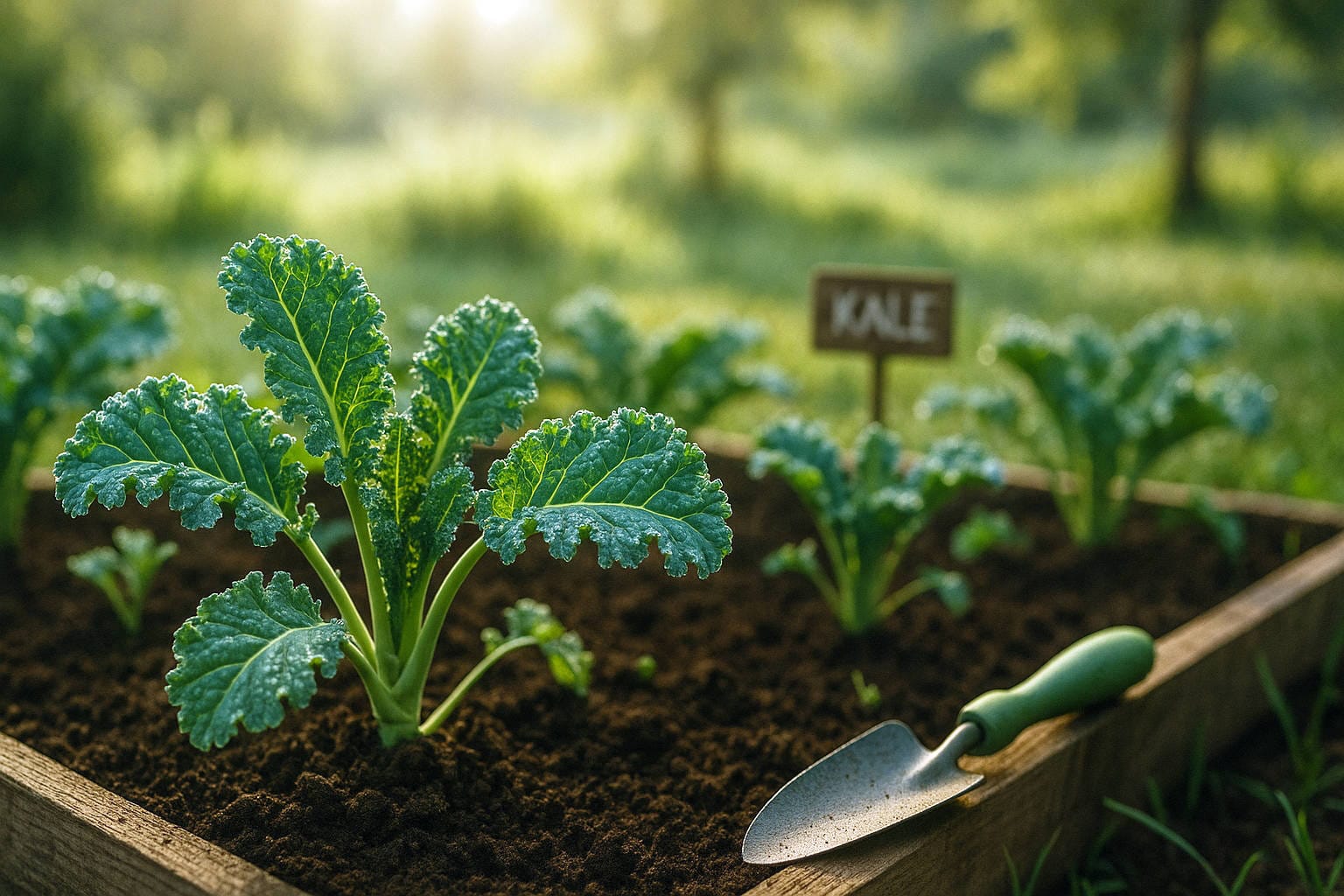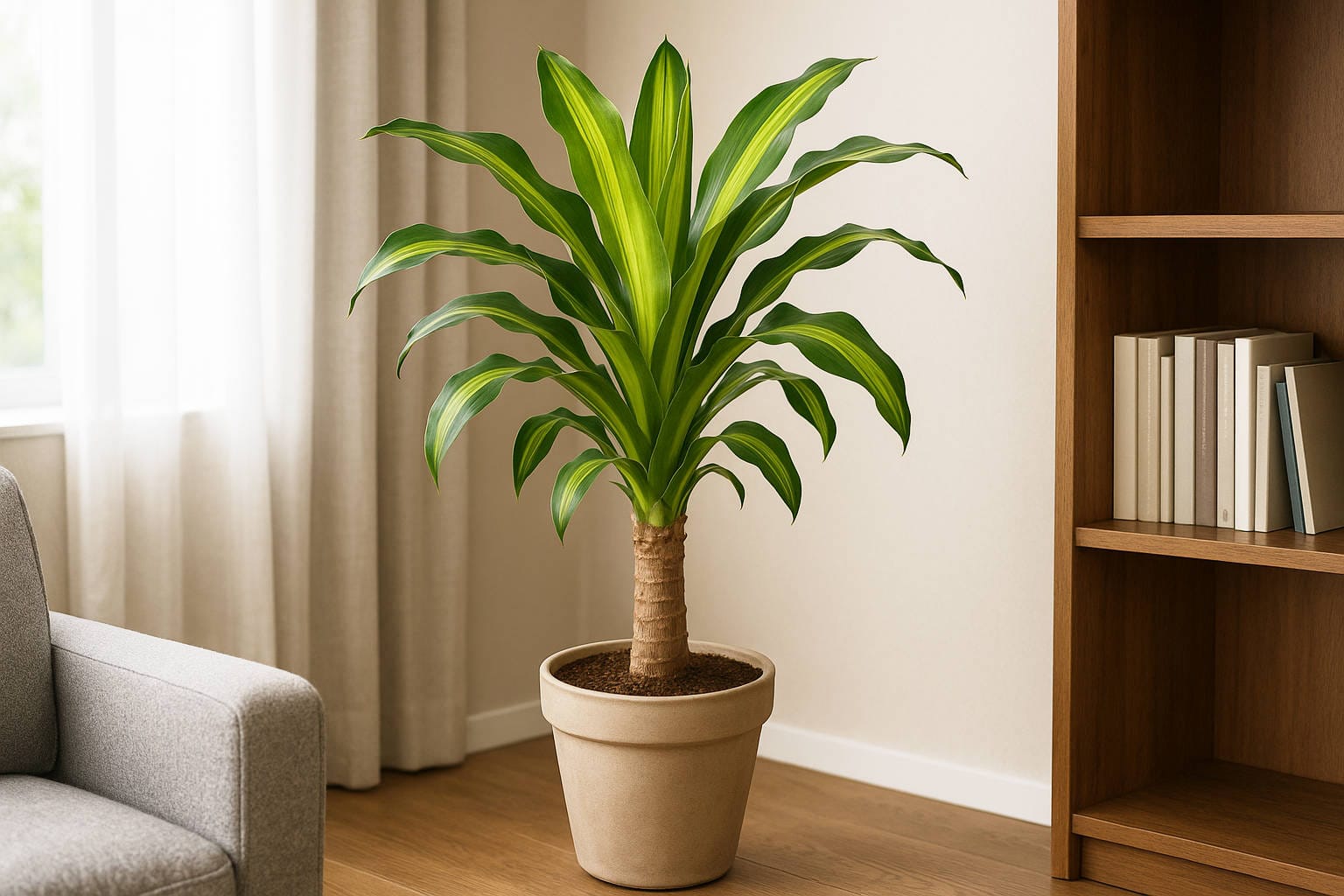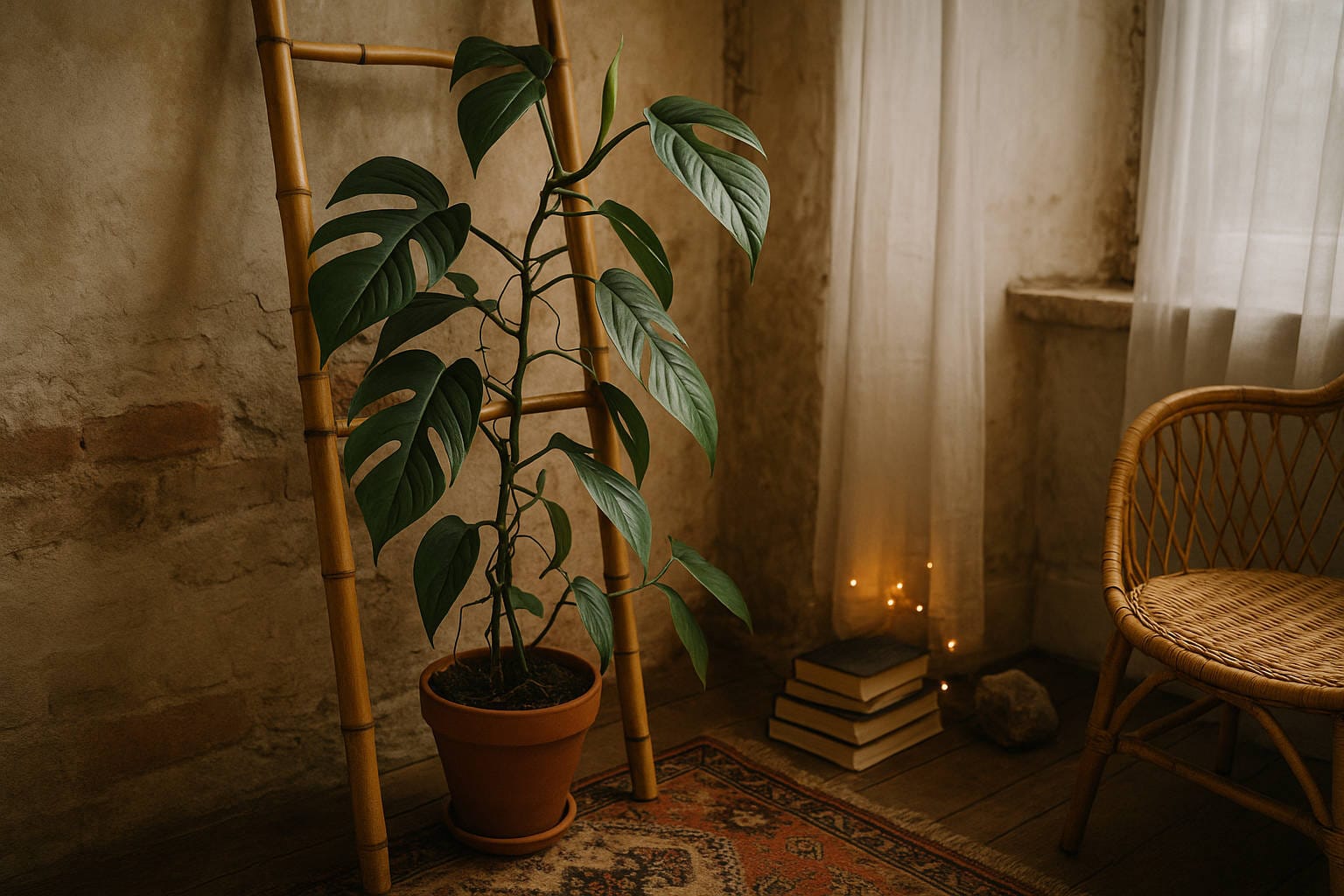Are you curious about how to grow kale? Awesome choice. Kale is one of the easiest and most rewarding greens you can grow at home.
In this guide, we’ll walk you through everything you need to know to grow healthy, tasty kale, including how to pick the right variety, keep it pest-free, and finally harvest those dark green leaves.
You’ll also get handy tips along the way that’ll save you time, avoid frustration, and help you grow a better crop than anything you’d find at the store.
So, stick around to the end.
Why Grow Kale? Health & Garden Benefits
Kale is a rockstar in your garden and your kitchen. Here’s why:
- It’s stupidly good for you. We’re talking vitamin A (hello, bright eyes), vitamin C (bye-bye, colds), and a mega-dose of vitamin K for strong bones. Toss in antioxidants, and yeah, it’s basically a multivitamin that grows on a stalk.
- It laughs at cold weather. While your tomatoes are shivering at the first frost, kale’s like, “Is that all you got?” Plant it in early spring or fall, and it’ll thrive when other greens quit. Some varieties even taste sweeter after a frost.
- Low-maintenance = beginner-friendly. Forget finicky plants. Kale grows fast, doesn’t demand perfect soil, and bounces back if you forget to water it. Perfect for busy (or forgetful) gardeners.
- More bang for your space. Harvest leaves for months, and the plant keeps producing. One seed packet = endless salads.
Still not convinced? Try growing just one plant. You’ll be hooked.
You may also like:
- Tomato Plant Leaves Turning Yellow? 7 Causes and Easy Fixes
- 11 Container Gardening Ideas for Small Spaces and Patios
Best Kale Varieties for Home Gardens
Not all kale is created equal! Some types are better for salads, others for soups, and a few can survive snow. Here’s the cheat sheet:
- Curly Kale (the classic). Ruffled leaves, slightly bitter, perfect for chips. Tough enough for beginners.
- Lacinato (Dinosaur Kale). Dark, bumpy leaves. Sweeter than curly kale, great in soups. Doesn’t mind heat as much.
- Red Russian Kale. Pretty purple stems, milder flavor. Tender enough for raw salads.
- Siberian Kale. The cold-weather champ. Handles frost like a pro, leaves stay sweet even in snow.
Which one’s best for you?
- Container growing? Try compact varieties like Dwarf Blue Curled.
- Superfood smoothies? Lacinato blends smoother.
- Live where winter hits hard? Siberian’s your buddy.
Pro tip: Grab two varieties at once. You’ll see which one your garden (and your taste buds) like best.
You may also like:
- How to Grow Garden Sage at Home: Tips for Lush, Flavorful Plants
- Compost Bin: The Complete Beginner’s Guide to Easy Home Composting
How to Plant Kale: Step by Step
Alright, let’s get those kale seeds in the ground (or pots)! Here’s the no-stress way to do it right:
1. Timing is Everything
Kale loves cool weather. Plant seeds:
- Early spring (as soon as soil can be worked)
- Late summer (for a fall harvest that lasts until frost)
Pro tip: In warmer zones (7+), you can even grow it through winter!
2. Sun & Soil Setup
- Sun: 4-6 hours daily (morning sun + afternoon shade = happy kale)
- Soil: Mix in compost or aged manure first. Kale likes it rich but not soggy.
3. Planting Your Seeds
- Direct sow: ¼ inch deep, 3 seeds every 12 inches
- Transplants: Space seedlings 12-18 inches apart
- Containers: 1 plant per 12″ pot (they get big!)
4. Germination Game
Keep soil moist (not soaked). Seeds sprout in 5-8 days. Thin to 1 strong seedling per spot when they’re 2″ tall.
Hot climate hack: Start seeds indoors if summers hit 80°F+ early. Transplant when it cools.
You may also like:
- Brazilian Wood Plant Care: How to Grow It in Soil or Water Indoors
- Top 7 Pet Roses That Won’t Harm Your Dog or Cat
Kale Care Guide: Watering, Fertilizing & Pest Control
Kale’s easy, but a little TLC goes a long way. Here’s how to keep your plants thriving (and pest-free) without going overboard:
1. Watering: The Goldilocks Rule
Not too much, not too little. Kale likes:
- 1-1.5 inches of water per week (check soil — it should feel like a wrung-out sponge)
- Deep, less frequent drinks over daily sprinkles (encourages strong roots)
- Morning watering to prevent mildew (wet leaves overnight = no bueno)
Pro tip: Mulch with straw or leaves to lock in moisture and stop weeds.
2. Feeding Your Greens
Kale’s a hungry plant. Give it:
- Compost tea every 3-4 weeks
- Fish emulsion (stinky but effective) for a nitrogen boost
- Slow-release organic fertilizer at planting time
3. Pest Patrol: The Usual Suspects
- Cabbage worms (green caterpillars): Handpick or use BT spray
- Aphids (tiny bugs under leaves): Blast them off with water or neem oil
- Slugs: Beer traps or crushed eggshell barriers
Secret weapon: Plant nasturtiums nearby. They lure pests away from your kale!
You may also like:
Harvesting Kale: When & How to Pick Leaves
Here’s the best part: kale lets you steal leaves for months without killing the plant. It’s the gift that keeps on giving!
When to start harvesting:
- Baby leaves: Ready in 25-30 days (great for salads)
- Mature leaves: Wait until they’re 8-10 inches long (about 50-60 days)
How to harvest like a pro:
- Use scissors or pinch leaves: Never rip (you’ll damage the stem)
- Take outer leaves first: Start at the bottom, work upward
- Leave the center bud: This keeps the plant growing
- Morning picks are crispest: Hydrated leaves = better flavor
Secret bonus: After a light frost, kale leaves turn sweeter. That’s right, cold weather upgrades your crop!
One plant can feed you for months if you harvest right.
You may also like:
Pro Tips for Growing Killer Kale
Want to take your kale game from basic to brilliant? These insider tricks will give you the greenest, tastiest leaves on the block:
The Flavor Hack
- If your kale tastes bitter, try a quick “frost treatment” — leave plants uncovered during first light frosts
- For sweeter leaves, water less frequently (but deeper) in the week before harvest
Space Maximizers
Plant kale with:
- Nasturtiums (pest trap)
- Herbs like dill (improves flavor)
- Onions (natural pest deterrent)
Container Secrets
- Use fabric pots for better airflow to roots
- Add worm castings to potting mix for supercharged growth
- Rotate pots weekly for even sun exposure
Troubleshooting Quick Fixes
- Yellow leaves? Probably overwatering. Let soil dry out between drinks
- Holes in leaves? Slugs. Put out a saucer of beer at dusk
- Slow growth? Side-dress with compost or fish fertilizer
Bonus: Save your thickest stems! Chop and pickle them for zero-waste crunch.
You may also like:
Your Kale Success Story Starts Now
Look at you—ready to grow kale like a pro! This nutrient-packed green is one of the easiest (and most rewarding) crops you can grow. Just remember:
- Start with the right variety for your climate
- Keep the soil consistently moist (but not soggy)
- Harvest outer leaves first to keep production going
- Don’t panic over pests. Most are easy to handle organically
The best part? Unlike finicky plants, kale wants to survive. Even if you make a few mistakes, it’ll bounce back. Now go get those seeds in the ground—your future salads (and smoothies) will thank you!
Level up your container gardening skills with our Complete Guide to Growing Tomatoes in Pots. Your next homegrown obsession awaits!
FAQ: Your Top Kale Questions, Answered
1. How long does kale take to grow?
Baby leaves in 3-4 weeks; full maturity in 50-65 days. But you can start harvesting earlier!
2. Can I grow kale indoors?
Absolutely! Use a 12″ pot near a sunny window or under grow lights.
3. Why are my kale leaves tough and bitter?
Usually means it’s over-mature or stressed (heat/drought). Pick younger leaves and keep soil moist.
4. Does kale regrow after cutting?
Yes! Leave the center bud intact, and it’ll keep producing new leaves all season.
5. What’s the white powder on my kale leaves?
Powdery mildew. Avoid wetting leaves when watering and improve air circulation.




